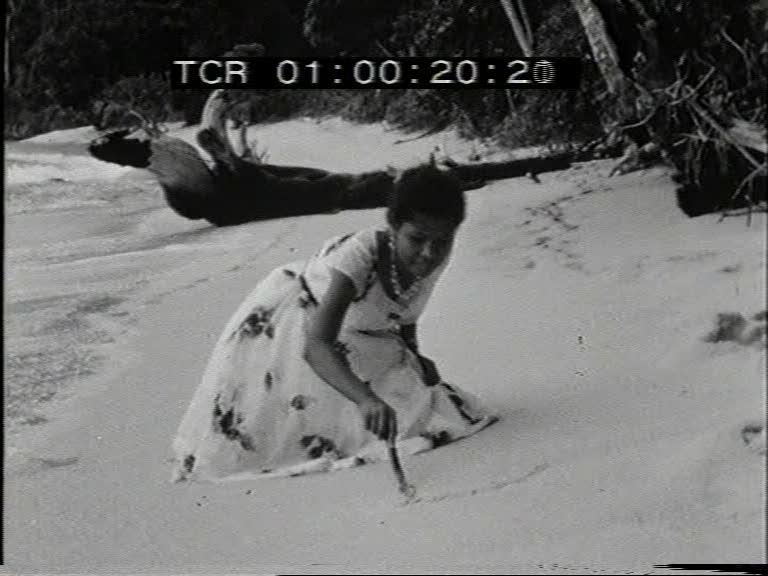

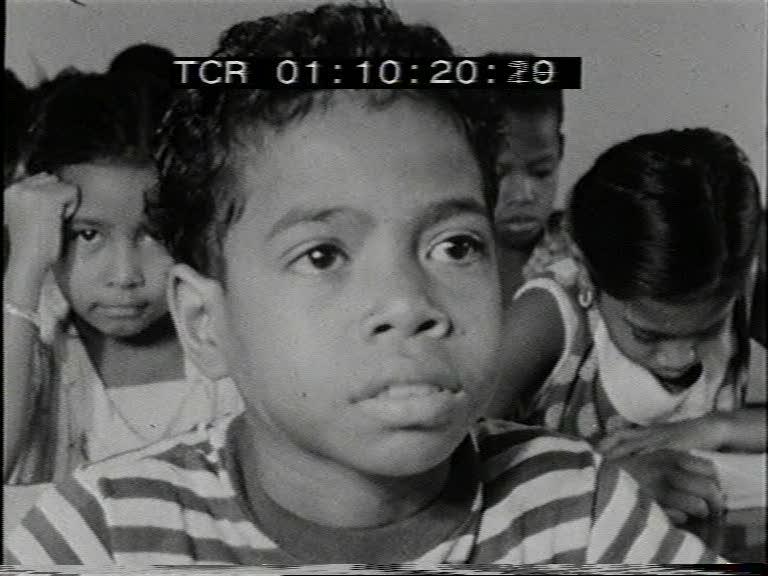

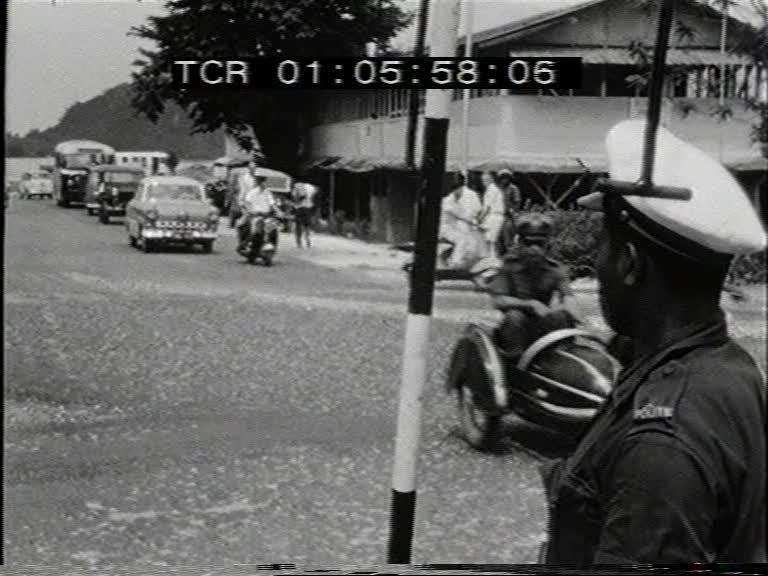



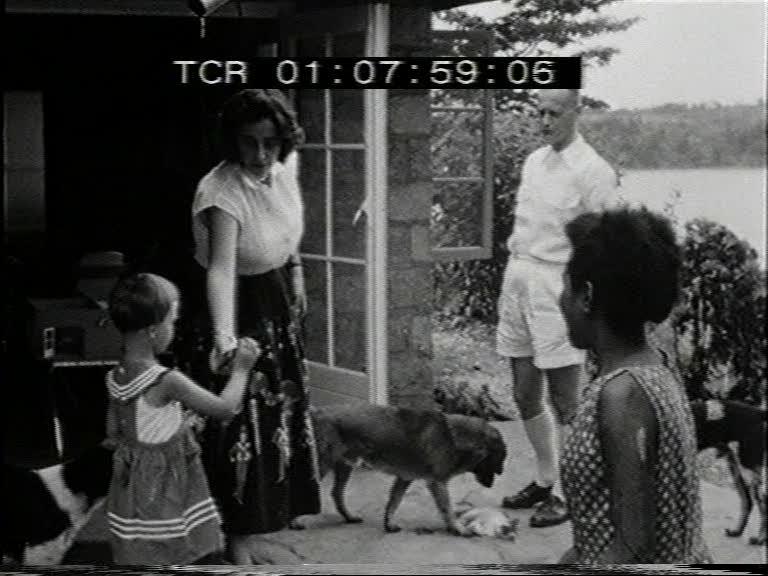

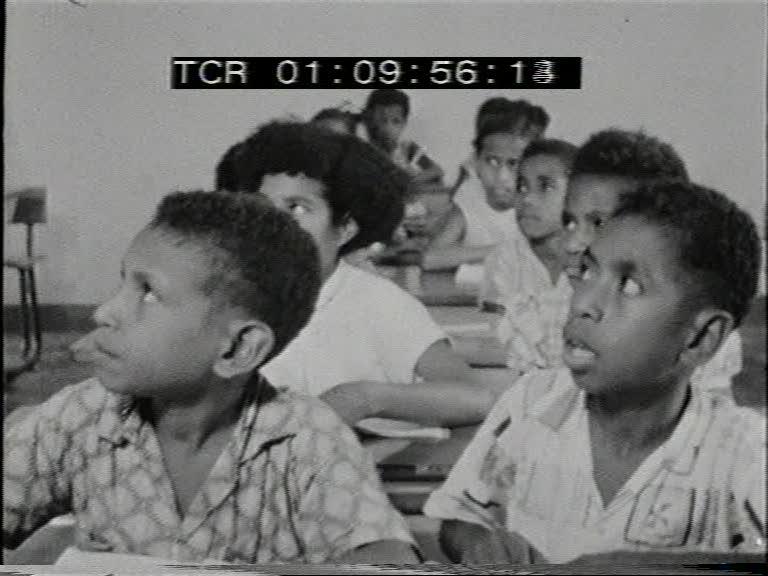



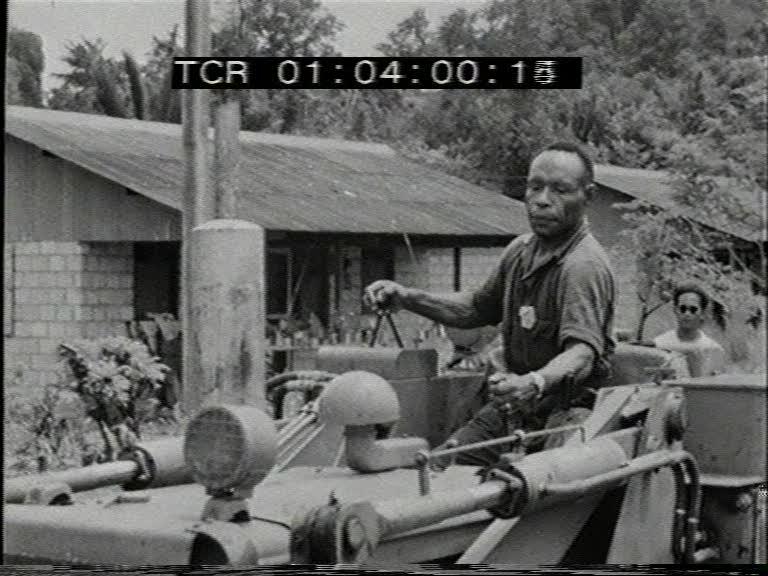

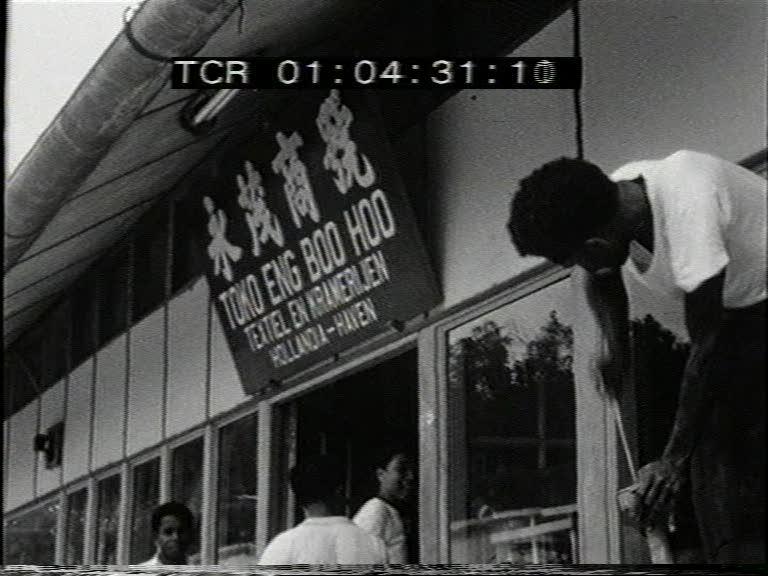



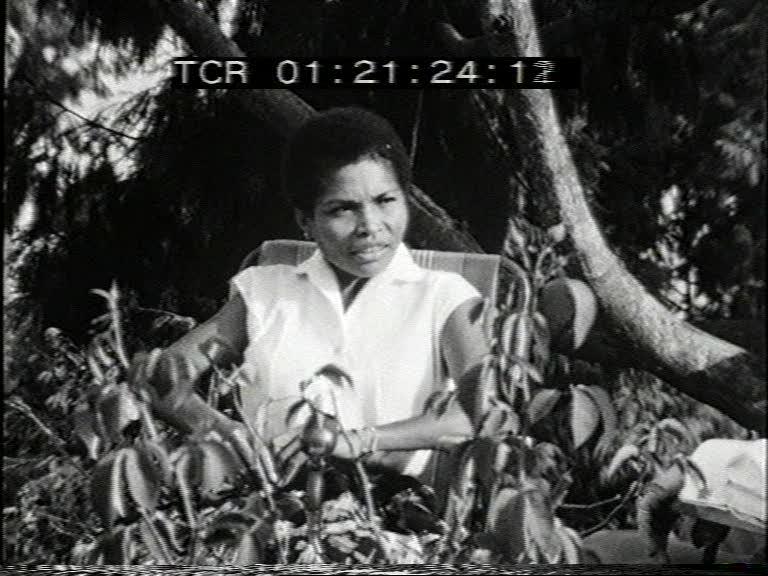

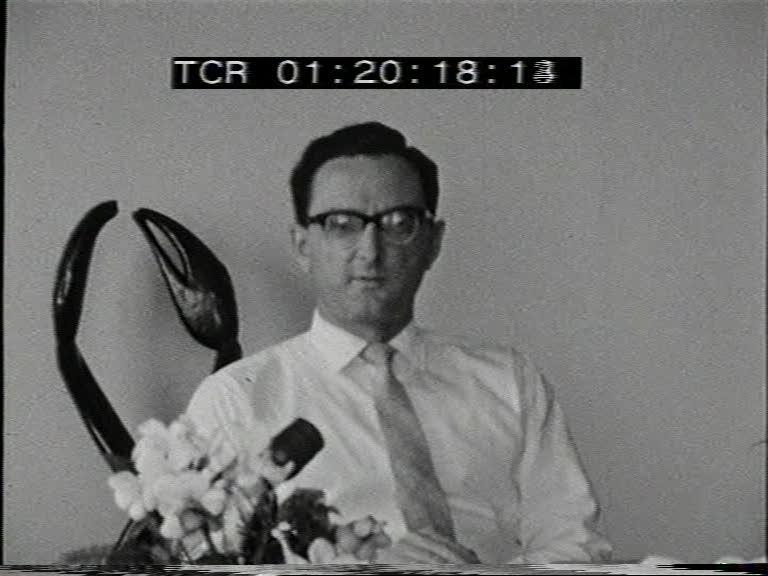

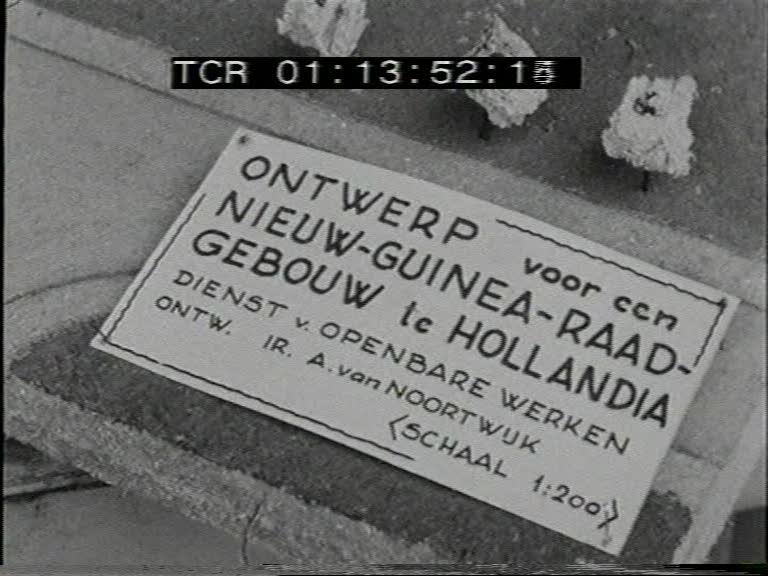

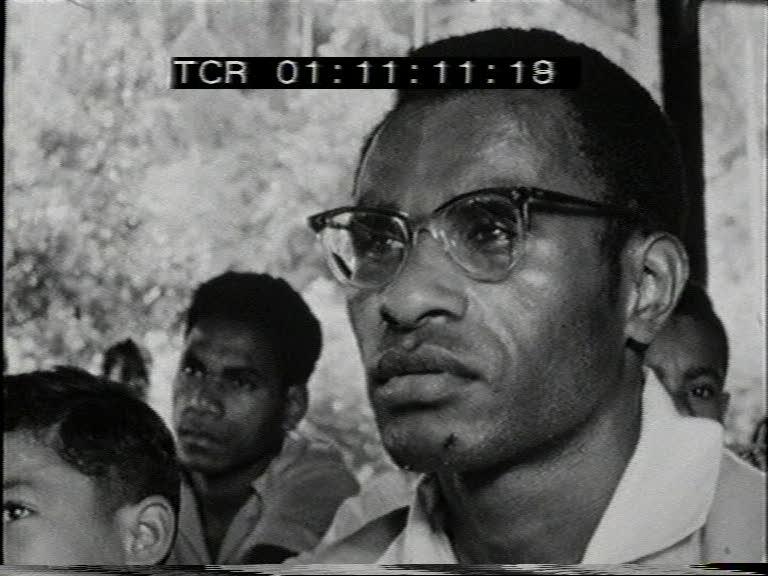

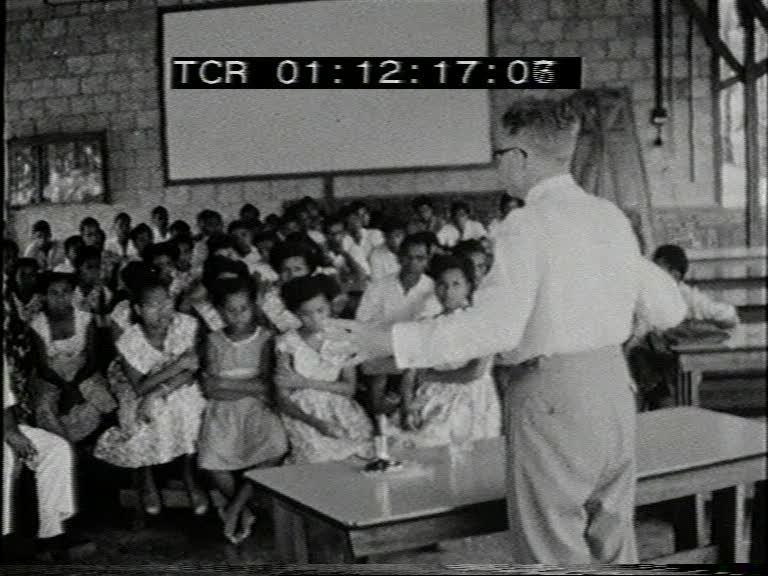

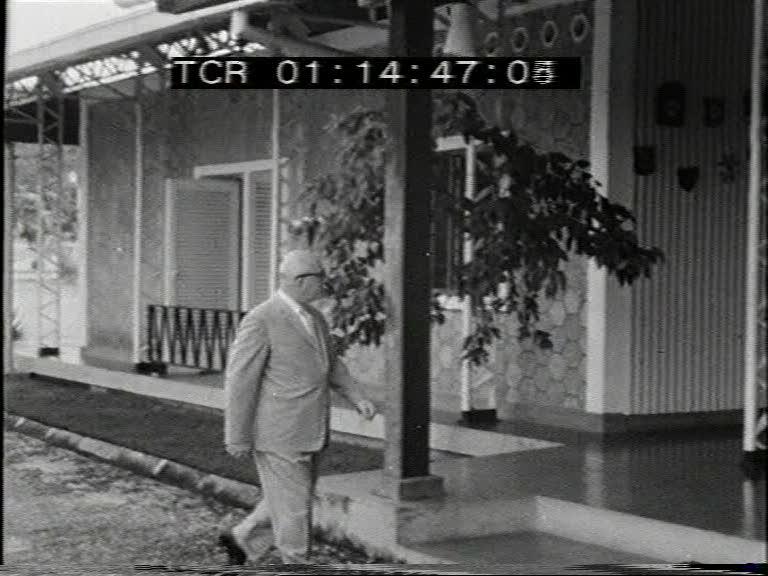

Report Anthony van Kampen 1: Installation of the New Guinea Council
Report Anthony van Kampen 1
Objectcode
FI/1200/88
Reportage on the installation of the New Guinea Council. Filmic walk through Hollandia (Jayapura) in 1961. Emphasize is put on development of the country and the training of the Papuan population to prepare them for this task. Many Papuans are active in quite a few occupations already. Interviews by the author and journalist Anthonie van Kampen with governor P.J. Platteel, with de chairman of the New Guinea Council, J.H.F. Sollewijn Gelpke, and with some members of this Council. (source: www.beeldengeluid.nl)
Contents
Description (source: www.beeldengeluid.nl): SHOTS: Young Papuan woman in cheerful frock, walks on the beach, sits down, and sketches with a little stick the outline of New Guinea, wipes away the Australian part, and plants the little stick on the site of Hollandia (Jayapura). Music accompanies the sung Papuan anthem. 00.38 View to the left across Hollandia on the Humboldt Bay. View to the right across Hollandia Harbour and pile-dwellings along the coast. Fisherman catches fish with a cast-net, woman digs mussels in the mud along the sea. Fisherman catch fish with spoon-bait, staying in quickly travelling little boat with outboard motor. Pile-dwellings along the shore, where children are swimming, mothers and cigarette smoking grandpa posing. Scraggy dog, duck with chicks, cockatoo on beam, proud cock. 02.51 Modern cottages of police-camp Kloofkamp, where the washing is hanging out and women are doing the washing-up and the cooking. Modern houses, inhabited by Papuans, panorama of town quarter Hamadi on the bay. 03.48 Young Papuans repairing with spade, hoe and bulldozer damage on the road caused by abundant rainfall. Buildings in Hollandia Town, bookstall with textbooks on display, Chinese store in Hollandia Harbour, tailor, post office, cinema 'Orient Theater'. Daily market with vendors sitting near their vegetables and fruits. Papua controls the motor traffic with stop-sign on crossing. 06.06 Dutch judges listen to Marcus Wendei, the first Papuan bailiff. The Central Hospital at Hollandia, with reference board for the various departments, patient being moved by wheeled stretcher, ambulant patients, Papuan operation-assistants washing arms and hands. They will assist Dr Wester, Dutch surgeon, during abdominal operation on Indonesian woman. 07.38 Bungalows inhabited by Dutchmen with view of the bay. The Uitermark family from Rotterdam on terrace. Pharmacy Pharma, the N.H.M. Bank (Dutch Trading Company). Interior of the office for In- and Export Trade, the personal of which is multi-racial. Interior bakery and delicatessen shop De Boer. Butcher Ehrenfeldt is looking on how his Papuan assistants are cutting up chops and how they are boning meat. Dutch sailor and Papuan assistant taking a basket with loaves to the steward in the naval barracks Hollandia. 09.43 Swimming Papuan children. Papuan teacher Misset as well as a member of the New Guinea Council, teaching a class of children at the primary school. During interval the little girls are amusing themselves among other things with rope skipping, the boys as Tarzan swinging on a liana. The Dutch minister Kamma addresses on a primary medium school an attentive audience of older Papuan boys and girls, and in glowing terms answers questions made in a previous meeting. 13.09 Smoothing construction site for building the New Guinea Council by bulldozer while tipper truck dumps supplied ground. Scale-model of the project, that must be ready in a year and a half. Activities in building of municipal auditorium, the town council of Hollandia, on the Captain Sachseweg (founder of Hollandia on 7th of March 1910), where in a couple of days the installation will take place. Papuan technicians are testing the equipment of the audio system as well as that of the translation system. Interviewer Anthony van Kampen passes marine sentry and is being welcomed by lady secretary. 14.57 View over bay from balcony, where governor is being interviewed by Van Kampen. Governor Platteel unfolds the composition of the Council, explains his contact with the Council and declares that the Council officiates as a Parliament, with all its powers. In the end discusses about the meaning of the word Papua. 18.46 Interview with the Dutch chairman of the New Guinea Council, Sollewijn Gelpke, who, when asked, declared to maintain frequent contact with the Government in the construction of legislative-executive powers. He expects that in course of time the members, now representatives of the population, will unite themselves in political movements, such as: progressive, liberal and conservative. He expects some snappy oppositions, which will disappear, however, on the execution of the ambitious task: the building of the country. 21.05 Interview with the only feminine member of the Council Miss Merouw [? This probably should be Ms Tokoro-Hanasby.], who asserted that the Council means the only way to progress, that the women in the village think the changes rather 'queer', and that she will champion equal rights for men and women, because of the still existing subordination of the latter. 22.01 Interview with Papuan member of the Council, Zongonau [?], who expects for the future united cooperation between the various races, and he asserts that they - the Papuans - have nothing to do with Indonesia and their demands. 22.53 Interview with Dutch member of the Council, Olaf de Rijke, as a representative of district 2, looks after the interests of the 'Indian Dutchmen' and temporary employees. Depending on the attitude of the Government he expects to be able to do constructive work and he thinks it imperative that the autocratic attitude of the administration, which has been going on for the past ten years, should change into normal proportions with participation of the Council. He pleads for gifted Papuans to receive a schooling in Holland and also for a reform of the fiscal system. 25.22 Interview with Mr Wayoi, chairman of the political party Parna (National Party), which has a thousand members. He thinks that the Council should focus especially on the economic, social and cultural development, pleads for a voice in the Dutch-Indonesian battle about the country, and demands on behalf of his party that New Guinea reaches independence in 1970. 26.56 Interview with member Nicolaas Jouwe, who appreciates the composition of the Council, he foresees in the future the building of an unity in spite of the different races, and who has no fear of the Indonesian threat. 28.17 Young Papuan woman, sketching the map, flies from the waves rolling onto the beach. 29.05 END
Year
1961
Technical detail
Film type
Film report
Black and white
Dutch
References
Links
http://www.beeldengeluid.nl
PACE collection
FI / 1200 / 89